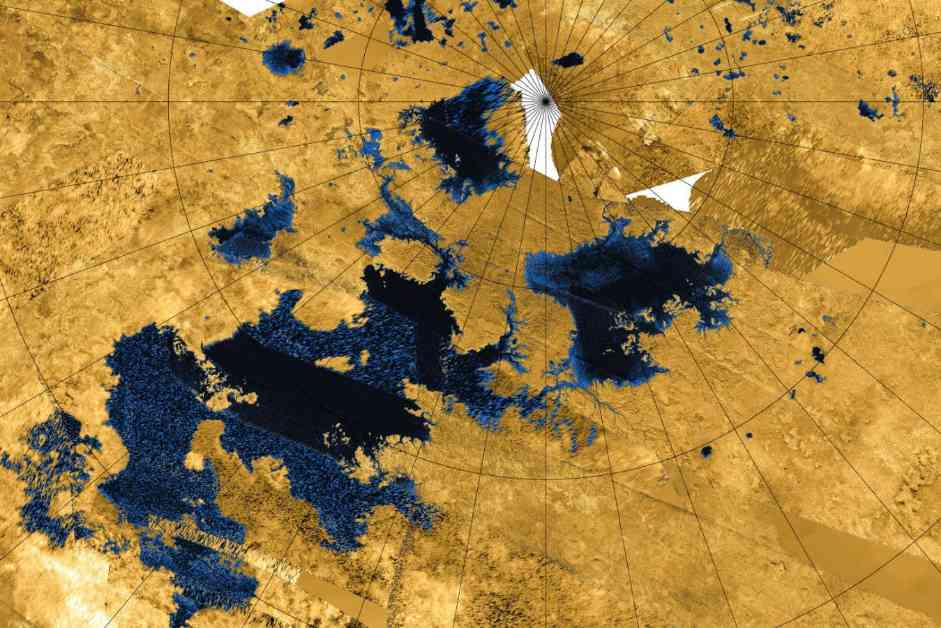Researchers have recently discovered fascinating details about the lakes on Saturn’s moon, Titan, revealing a landscape similar to Earth’s combination of freshwater rivers and salty oceans. Unlike Earth’s water oceans, Titan’s lakes are made up of methane and ethane, which are in liquid form due to the moon’s extremely cold temperatures.
Previous radar measurements from NASA’s Cassini spacecraft provided some insight into the lakes’ properties, such as composition and surface waves, but a new study led by Valerio Poggiali at Cornell University used a different radar technique to map the composition and surface of Titan’s seas in more detail. The researchers found that as you move towards the north pole of Titan, the lakes become cleaner and purer, with a higher concentration of methane.
The study also revealed that many of the rivers and estuaries feeding into the lakes have rough surfaces, likely caused by wind-driven waves. This suggests the presence of active tides or currents that play a crucial role in the moon’s environment. Understanding the activity on the surface of Titan’s seas is essential for planning future missions, such as a Titan submarine, and gaining insights into the moon’s atmospheric characteristics.
Furthermore, the researchers noted that the rivers feeding into the lakes had a higher composition of methane before entering. This discovery could help scientists track the methane and ethane cycle on Titan, similar to how the salinity of water changes when a river enters a large ocean on Earth. By studying these dynamics, researchers hope to gain a better understanding of Titan’s complex environment and its unique hydrocarbon seas.
Overall, the latest findings provide valuable insights into the diverse seascape of Titan and offer new opportunities for future exploration and research on Saturn’s intriguing moon. By unraveling the mysteries of Titan’s lakes and rivers, scientists are one step closer to understanding the complex processes shaping this alien world.






